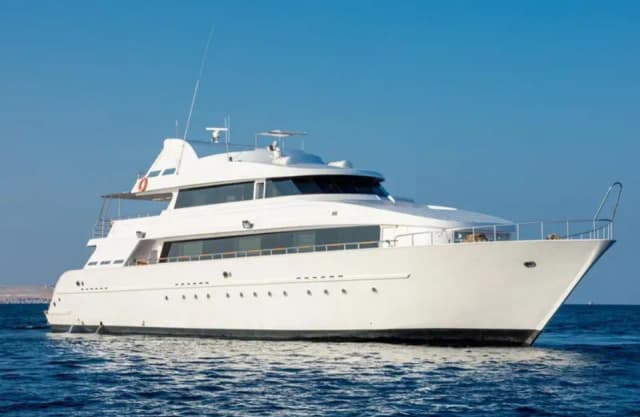Red Sea Aggressor IV
Red Sea Aggressor IV is a luxury liveaboard offering world-class diving in Egypt’s Red Sea. Explore vibrant coral reefs, historic wrecks, and abundant marine life in ultimate comfort.
Trip dates, price & live availability
Cabins
Deck plan
Features & facilities
Boat features & facilities
AC
Ensuite bathrooms
Entertainment system
Large sundeck with shading
Spacious saloon
2 hot tubs
Chaise lounges and deck chairs
Bar and restaurant
Small library
Nitrox
Dive features & facilities
How water shower
Location
The Red Sea Aggressor IV operates from the Port Ghalib yacht marina and resort area.
Dive Overview
The Red Sea boasts prolific marine life, home to over a thousand fish species, one-fifth of which exist exclusively in this body of water. The regions extremely sunny conditions are ideal for coral growth, and over 200soft and hard coralscan be found in extensive gardens lining the Red Seas shallow shelves. Beyond these lively reefs, the median central trench drops to depths of over 7000 feet, facilitating a water circulation system that supports a healthy marine environment.
[See: Red Sea Dive Travel Guide]
Accommodation Overview
The Red Sea Aggressor IV can comfortably accommodate up to 26 passengers in its Master Staterooms (3) and Deluxe Staterooms (9.) Each stateroom features either a queen bed (for the Master Stateroom) or two twin beds (for the Deluxe Staterooms) and as well as air conditioning, a private head and shower, mirrored cabinet, hair dryer, fresh towels, and volume controls. Additionally, each room hasa 32-inch flat-screen TV offering a selection of 400 movies, TV shows, and documentaries.Guests can also make use of the TVs for editing underwater photos and videos by plugging their computers into the screen.
- Deluxe Stateroom (# 1 - 2, 5 - 10, 12 - 13)
- Two single beds, porthole, wardrobe, bathrobes, hairdryer, fresh towels, AC units and private ensuite bath.
- Master Stateroom (# 3 - 4, & 11)
- One queen bed, porthole, wardrobe, bathrobes, hairdryer, fresh towels, AC units, private ensuite bath.
Deluxe Stateroom (L) & Master Stateroom (R)
Food & Drinks
The menu aboard is varied and plentiful, with a variety of Egyptian feasts and local cuisine.You will wake up to fresh fruits, hot entrees, cereals, and juices. Lunches feature hot soups, homemade bread, salads, sandwiches, and/or entrees. Dinners are chef-prepared and served each evening and include salads, vegetables, seafood, beef, or chicken with a fresh homemade dessert.
The Aggressors drinks selection includes fruit juices, soft drinks, iced water, iced tea, coffee, and a limited selection of local beer and wine, which are complimentary. We suggest you purchase your favorite liquor(s) from the duty-free shop at the airport prior to departing to Egypt.
Itineraries
More information
Practical information
Time Zone
GMT+2
Local Currency
EGP (Egyptian Pound)
Language
Arabic, English
Electricity
220v
Payment methods
Cash, AMEX, Visa or MasterCard credit card
























